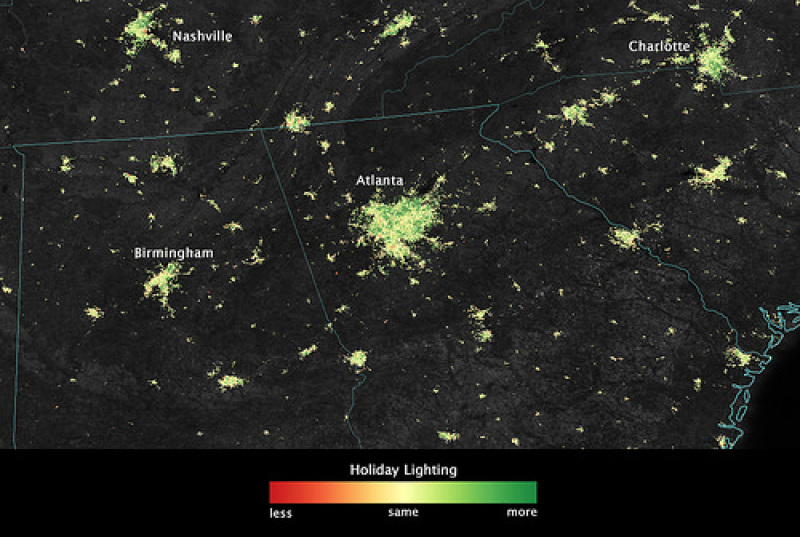
NASA researchers reported that the United States is producing more lights during the holiday season after observing the country from space, according to PC Mag.
Using a special satellite, they noticed that the volume of nighttime lights in the country increases by 20 to 50 percent during Christmas and New Year as compared to ordinary days.
The researchers were able to gather the data using the Suomi NPP satellite, which is jointly used by NASA and the National Oceanic Atmospheric Administration (NOAA) to study climate change patterns in different parts of the world.
According to their observations, the number of lights in the country begins to increase after November's Black Friday. This then continues until the New Year celebrations.
After studying around 70 cities in the country, Eleanor Stokes, a Jenkins Graduate Fellow at NASA and member of the research team, said the increase in lights is more noticeable in suburban areas.
"Overall, we see less light increases in the dense urban centers, compared to the suburbs and small towns where you have more yard space and single-family homes," he said in a statement during the recent American Geophysical Union conference.
For Miguel Roman, the co-leader of the study, the research team's findings also highlight the effect of the holidays on people's behavior, CBS News reported.
"What is happening during the holidays is that our patterns are changing," he said during the conference. "We are becoming this weird species. We are eating more turkey and we are going out to Macy's and buying stuff. We are changing our patterns of behavior."
"People are leaving work for the holiday and turning on the lights," Roman continued. "People are demanding more energy services."
In connection with the behavioral aspect of the study, Roman noted that their observations can also be used to monitor energy consumption in the country as part of an attempt to reduce greenhouse gas emissions.
"More than 70 percent of greenhouse gas emissions come from urban areas," he said. "If we're going to reduce these emissions, then we'll have to do more than just use energy-efficient cars and appliances."
"We also need to understand how dominant social phenomena, the changing demographics of urban centers, and socio-cultural settings affect energy-use decisions," Roman added.



















